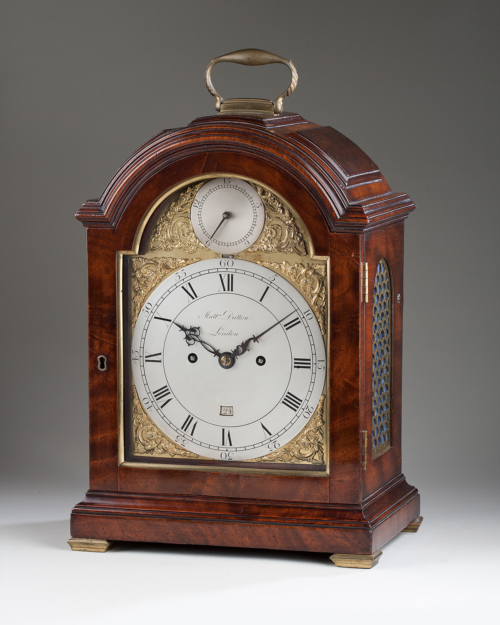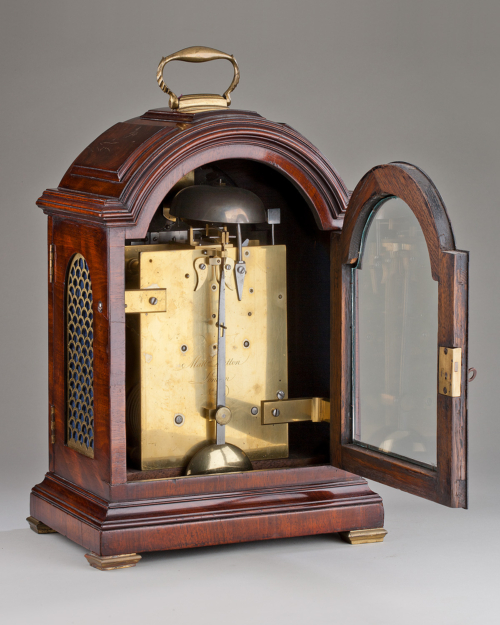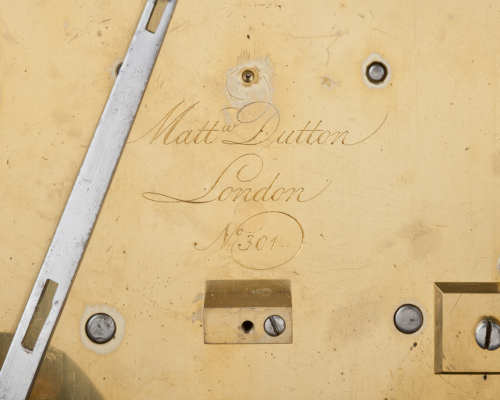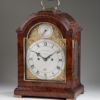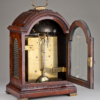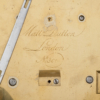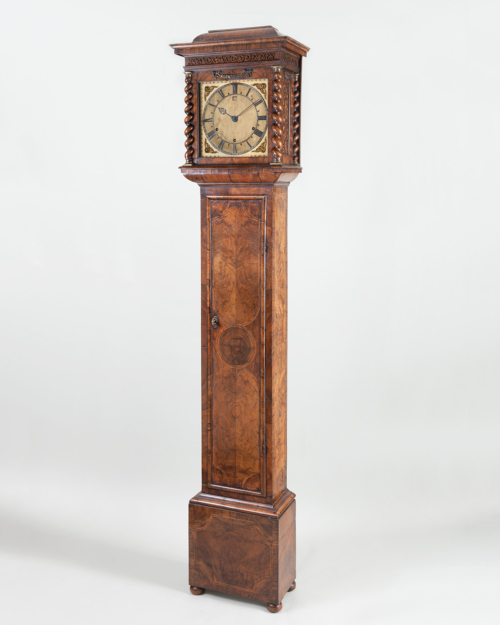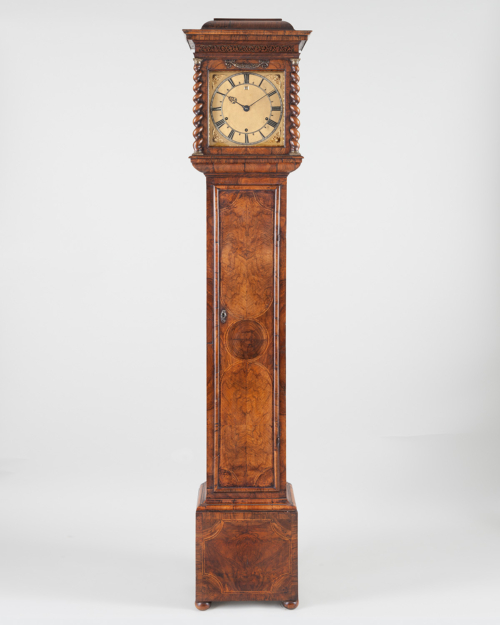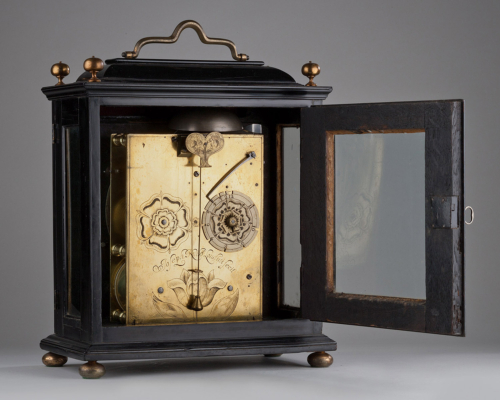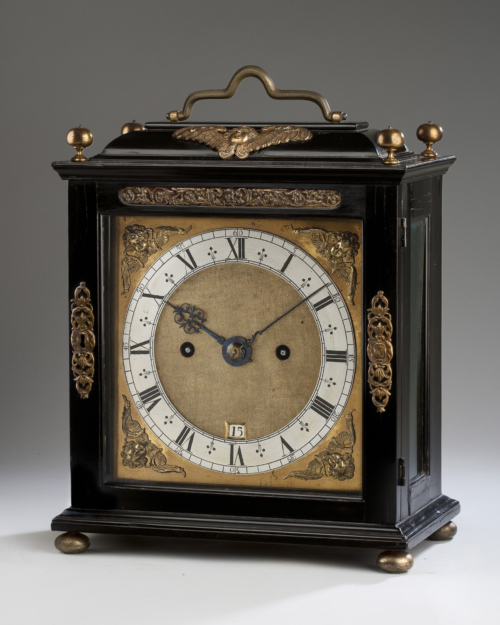| Height | 15¼ inches |
| Case | Breakarch, triple-pad, mahogany case veneered onto an oak carcass surmounted by curved-base handle, arched side panels with fishscale frets. The breakarch door with brass ovolo frame to the dial aperture, the base on brass moulded block feet. |
| Dial | The 6¾ inch breakarch dial with rococo spandrels, subsidiary regulation dial calibrated 0-15 to the arch with blued-steel hand and square projection for use with a key. Strike/Not strike lever above XII, one piece silvered chapter-disc with Roman and Arabic numerals and calendar aperture above VI. Signed above the centre Mattw. Dutton London. Sculpted blued-steel hands. |
| Movement | Fine twin-fusee movement, heavy 5½ by 7⅜ inch plates, five baluster pillars, going train with anchor escapement and spring-suspended lenticular pendulum, pivoted regulation platform mounted on top of the plates, adjusted through the dial. Strike train governed by rack-and-snail sounding the hours on a bell. The plain backplate signed Mattw. Dutton London No. 301. |
| Duration | 8-day. |
| Provenance | Christie’s, London, 26 Nov 1996, lot 231 (£12,377). |
| Literature | Garnier & Carter, The Golden Age of English Horology, 2015, p.256-257. |
| Escapement | Anchor. |
Mattw. Dutton, London, No. 301 circa 1795
A fine mahogany breakarch triple-pad top striking table clock
A very similar clock, no. 308, by Dutton was exhibited at London, Science Museum, British Clockmakers’ Heritage, 1952, cat. no. 161.
Mahogany was reserved for the more expensive table clock cases.
Product Description
A very similar clock, no. 308, by Dutton was exhibited at London, Science Museum, British Clockmakers’ Heritage, 1952, cat. no. 161.
Mahogany was reserved for the more expensive table clock cases.
Additional information
| Dimensions | 5827373 cm |
|---|

